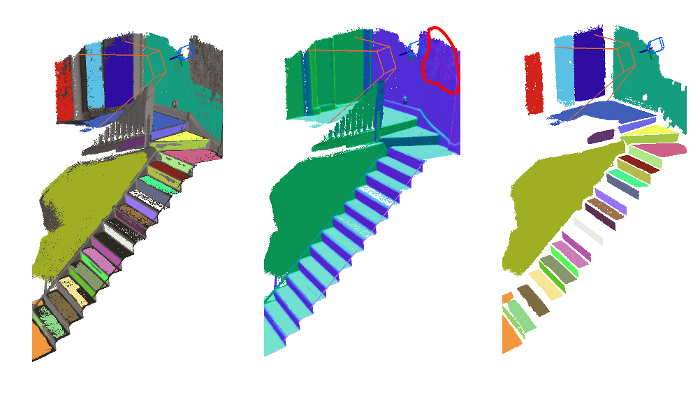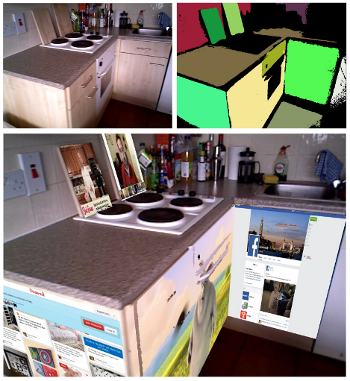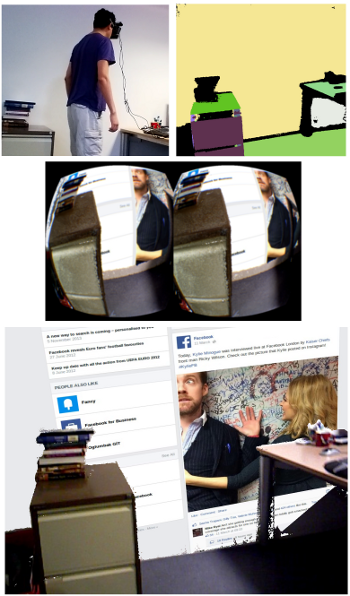Dense Planar SLAM
Using higher-level entities during mapping has the potential to improve camera localisation performance and give substantial perception capabilities to real-time 3D SLAM systems. We present an efficient new real-time approach which densely maps an environment using bounded planes and surfels extracted from depth images (like those produced by RGB-D sensors or dense multi-view stereo reconstruction). Our method offers the every-pixel descriptive power of the latest dense SLAM approaches, but takes advantage directly of the planarity of many parts of real-world scenes via a data-driven process to directly regularize planar regions and represent their accurate extent efficiently using an occupancy approach with on-line compression. Large areas can be mapped efficiently and with useful semantic planar structure which enables intuitive and useful AR applications such as using any wall or other planar surface in a scene to display a user’s content.






